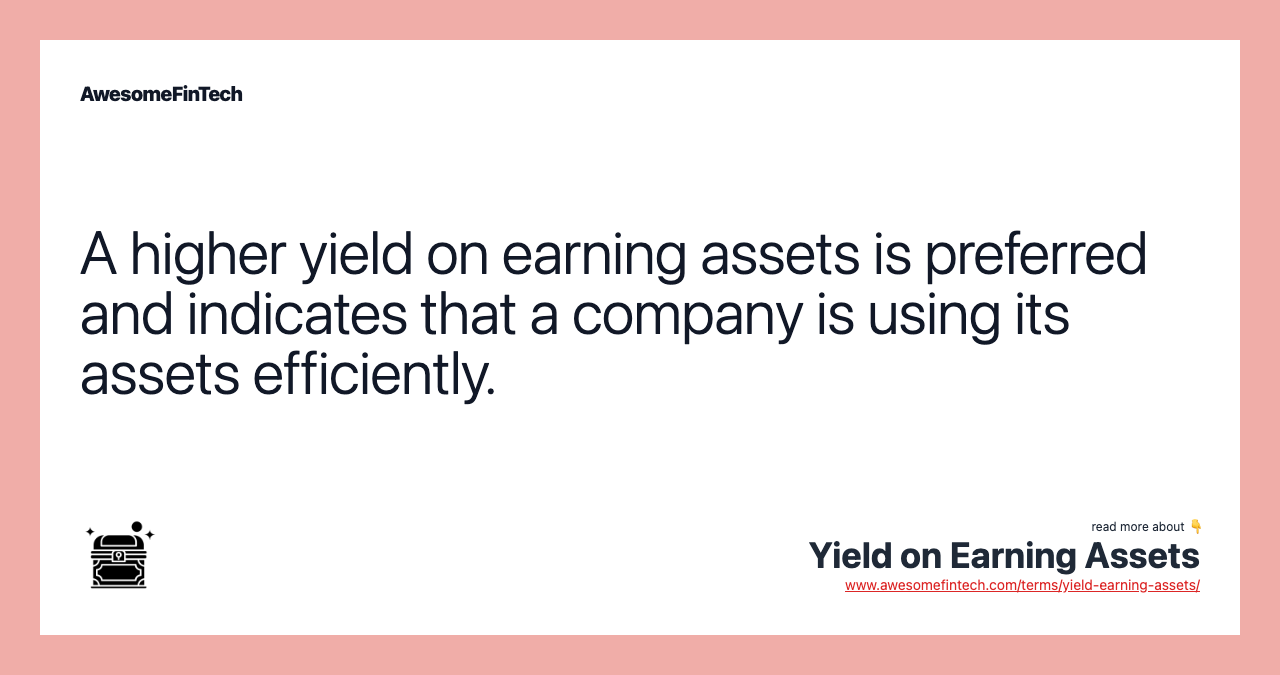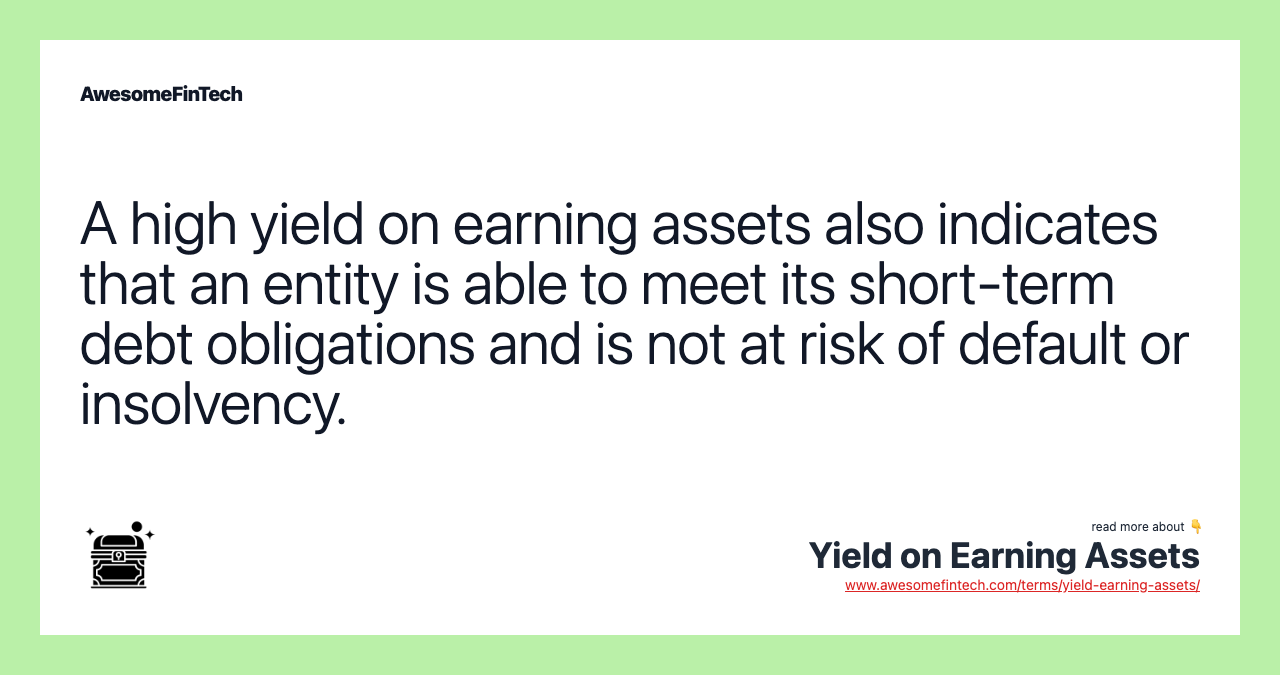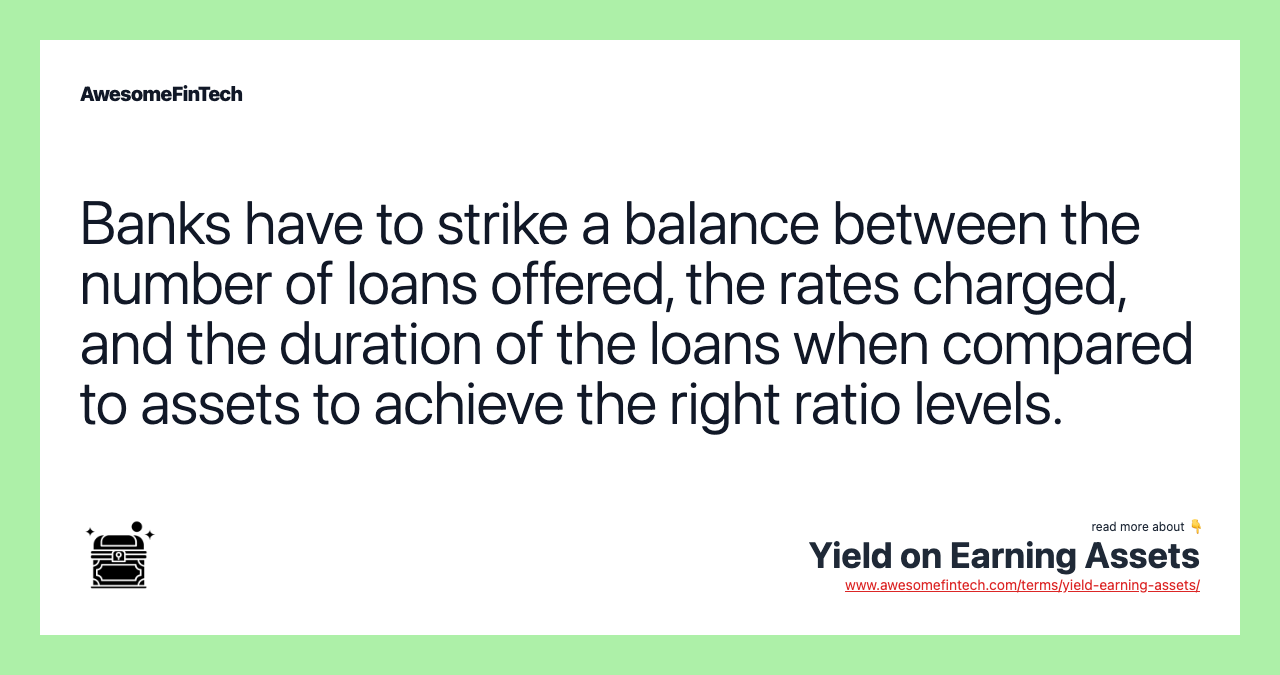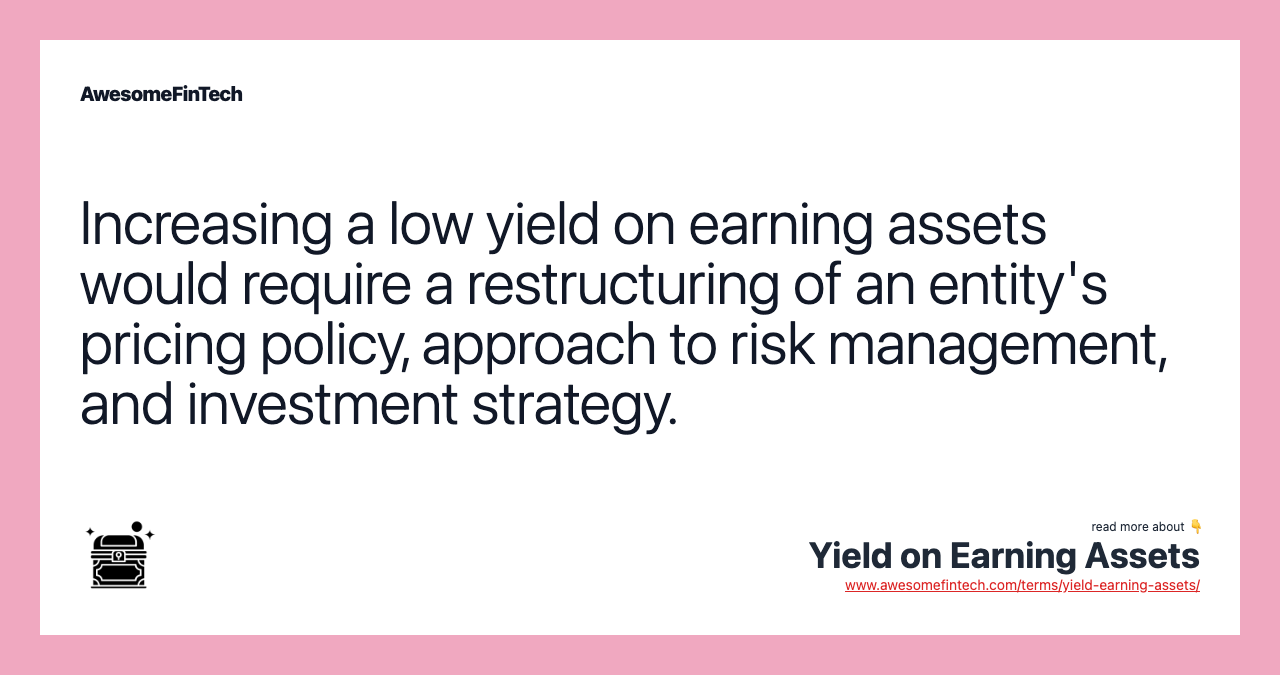Yield on Earning Assets
The yield on earning assets is a popular financial solvency ratio that compares a financial institution’s interest income to its earning assets. The yield on earning assets is a popular financial solvency ratio that compares a financial institution’s interest income to its earning assets. Financial institutions with a low yield on earning assets are at an increased risk of insolvency, which is the reason the yield on earning assets is of interest to regulators. Yield on earning assets is a financial solvency ratio that compares an entity's interest income to its earning assets. Increasing a low yield on earning assets often involves a review and restructuring of a company’s policies and approach to risk management, as well as a review of the general operations of how the company chooses which loans to provide to which markets.

What Is Yield on Earning Assets?
The yield on earning assets is a popular financial solvency ratio that compares a financial institution’s interest income to its earning assets. Yield on earning assets indicates how well assets are performing by looking at how much income they bring in.






Understanding Yield on Earning Assets
Solvency ratios shed light on if a financial institution has the ability to stay in business by meeting its short-term obligations. The yield on earning assets is a way for regulators to determine how much money a financial institution is earning on its assets. Large cash yields are preferred, thereby indicating that a company can pay its short-term obligations and is not at risk of default or insolvency.
Banks and financial institutions that provide loans and other investment options that offer yields have to strike a balance between the different types of investment vehicles they offer, the interest rates charged, and the duration of those investments. These factors determine the amount of interest income a debt vehicle will bring in over a specific time frame. This interest income is then compared to the earning assets.
Generally speaking, the higher a company’s loan to asset ratio, the higher its yield on returning assets. This is because the more loans made the more interest income earned or because higher-yielding investment vehicles bring in more income relative to the amount of money loaned out.
High Yield vs. Low Yield
High yield on earning assets is an indicator that a company is bringing in a large amount of income from the loans and investments that it makes. This is often the result of good policies, such as ensuring that loans are appropriately priced, and investments are properly managed, as well as the company’s ability to garner a larger share of the market.
Financial institutions with a low yield on earning assets are at an increased risk of insolvency, which is the reason the yield on earning assets is of interest to regulators. A low ratio means that a company is providing loans that do not perform well since the amount of interest from those loans is approaching the value of the earning assets.
Regulators may take this as an indicator that a company’s policies are creating a scenario in which the company will not be able to cover losses, and could thus become insolvent.
As a measure of effectiveness, yield on earning assets can be useful for comparing different managers relative to their asset bases. Managers, or entire businesses, that can generate sizable yield with a small asset base are considered to be more efficient, and likely offer more value.
Increasing a Low Yield on Earning Assets
Increasing a low yield on earning assets often involves a review and restructuring of a company’s policies and approach to risk management, as well as a review of the general operations of how the company chooses which loans to provide to which markets.
Depending on the business or strategy, at times, yield on earning assets may need to be adjusted for various methods when compiling financial statements. For instance, certain off-balance sheet items could distort reported yield on assets when using financial statements that have not been adjusted to reflect these off-balance sheet items.
Furthermore, financial institutions could be charging low interest rates to remain competitive and gain business, which would result in a lower amount of income earned. In this case, a review of a company's pricing policy would be necessary.
Related terms:
Credit Analyst
A credit analyst is a financial professional who assesses the creditworthiness of individuals, companies, or securities. read more
Current Liquidity
Current liquidity is the total amount of cash and unaffiliated holdings compared with net liabilities and ceded reinsurance balances payable. read more
Debt Issue
A debt issue is a financial obligation that allows the issuer to raise funds by promising to repay the lender at a certain point in the future. read more
Financial Institution (FI)
A financial institution is a company that focuses on dealing with financial transactions, such as investments, loans, and deposits. read more
Insolvency
Insolvency is a situation in which an individual or company cannot pay off bills and debts. read more
Interest Rate , Formula, & Calculation
The interest rate is the amount lenders charge borrowers and is a percentage of the principal. It is also the amount earned from deposit accounts. read more
Investment Vehicle Defined
Investment vehicles are securities or financial asset, such as equities or fixed income instruments, that an individual uses to gain positive returns. read more
Liquidity Ratio
Liquidity ratios are a class of financial metrics used to determine a debtor's ability to pay off current debt obligations without raising external capital. read more
Loan
A loan is money, property, or other material goods given to another party in exchange for future repayment of the loan value amount with interest. read more
Market Share
Market share shows the size of a company in relation to its market and its competitors by comparing the company’s sales to total industry sales. read more